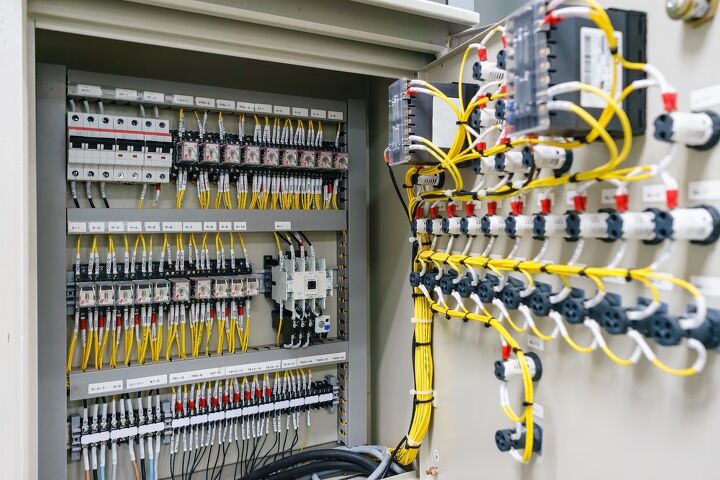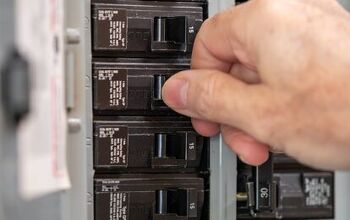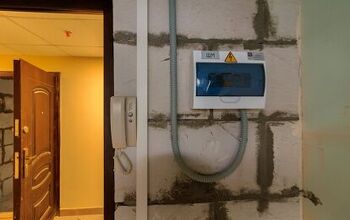How Many Subpanels Can You Have On A 200 Amp Service?

A subpanel is a panel that is a secondary circuit breaker. This panel feeds off the main panel. If you are looking to create subpanels in your home, it is crucial to know how many you can have on your service. That way, you don’t overload it and everything will work as it needs to.
Let’s take, for example, the main panel that has 200 amps. You can have as many subpanels as you want, provided the combined total demand doesn’t exceed 160 amps. This means that you’ll have to do some planning, and keep track of exactly which sub panels you add so you don’t exceed the amperage.
In this article we’ll discuss more about subpanels, what they’re used for, and how you connect them to your main panel. Just make sure when you do so that you’re paying attention to the amount you’re putting on. This guide will help you. Let’s get started!
Related Content: Do I Need A Permit To Add A Subpanel? | Neutral And Ground On Same Bar In The Subpanel? | How To Wire A Subpanel To A Detached Garage | Can You Feed Two Panels From One Meter?
Do You Need Electricial Wiring or Panel Upgrade Services?
Get free, zero-commitment quotes from pro contractors near you.

All About Subpanels
A smaller circuit panel breaker is a true subpanel. The subpanel will have four to twelve slots. It is fed from a 240-volt circuit breaker in the main panel. The main panel is known as the feeder breaker. The subpanel is similar to the main panel. Both panels have the same two hot bus bars. The neutral bus bars are the same as well as the ground ones. However, the subpanel doesn’t have a main shutoff circuit breaker as the main panel does.
The Use Of Subpanels
Subpanels are used for two main reasons:
- There is no room to install more circuits on the main breaker panel. In this case, the main breaker panel is already full of breakers.
- To be the control point near an area the circuits serve. For example, an upstairs apartment or a workshop.
If the subpanel is only needed to have space for more circuits, then the subpanel is generally placed next to the main panel.
How Subpanels Get Connected
When a subpanel is installed, first, a feeder cable is run from the main panel to the subpanel. The feeder cable is generally a three-wire cable. The cable also has three insulated conductors, as well as a bare copper ground wire. The two hot wires from the feeder cable are connected to the lugs on the hot bus bar in the subpanel. The neutral wire is connected to the neutral bus bar. The bare copper grounding wire is connected to the grounding bus bar.
From the main panel, the hot feeder wires are attached to the new 240-volt circuit breaker. The neutral and ground wires are then connected from the feeder cable to the corresponding bus bars in the main panel. Then the feeder breaker is snapped into an open double slot in the main service panel. The subpanel can now take individual circuit breakers for additional circuits being installed.
Subpanel Capacity
When a subpanel is installed, two capacity issues must be addressed:
- The subpanel must have the right amount of amperage capacity for the area and circuits it will serve.
- The main service must be adequately sized sufficiently to be able to supply power due to the extra demand created by the subpanel.
If you have an older main service, you may need a service upgrade before a subpanel can be installed. This will more than likely be the case if the subpanel will provide circuits to a major room addition or large room remodel.
What Are Some Warning Signs Of An Overloaded Electrical Circuit?
Warning signs include:
- Lights that flicker, blink, or dim
- Circuit breakers are frequently tripped
- Fuses are frequently blown
- Wallplates are warm or discolored
- Receptacles have cracking, buzzing, or sizzling noises
- Receptacles or wall switches have a burning odor coming from them
- Appliances, receptacles, or switches give you a mild shock or tingle
If you come across any of these issues, you will want to disconnect some subpanels. Overloading your circuits can ruin the appliances that are plugged into it. Furthermore, it can also eventually cause a fire, and melt any of the cords as well. So while you think it may not be a big deal, and you can shrug it off, you should take the time to fix the problem before it becomes bigger.
How Can I Check If My Panel Is Maxed Out?
You can use a multimeter to check the amperage of each hot wire. In this case, you are looking for low amperage. Turn everything as possible on to get the true amperage on each wire. Also keep an eye out of the signs that have been mentioned above. If you have a sign of an overloaded circuit but your meter isn’t giving a clear reading, chances are it’s overloaded.
Video: How Do I Know If My Panel Is Maxed Out?
Determining Subpanel Loads
There are several calculations required for determining the safe gross electrical load on your subpanel. The circuit load is the total load applied to the subpanel. You will also need to know the coverage area of the subpanel as well as the appliances that the subpanel will serve.
Step 1: Determine Coverage Area Of The Subpanel
To calculate the coverage area of the subpanel, first determine the square footage of each room. Square footage can be determined by multiplying the length times the width. Add the square footage of each room together. Then use the following calculation.
Total square footage x 3 watts = general lighting and receptacle circuit load.
Step 2: Determine Appliance Wattage
Next, you will need the appliance wattage. Once you total all appliance wattages, multiply by one for less than four fixed appliances. Multiply by 0.75 for four or more appliances.
You may have to add the largest motor load to the total. This additional wattage is to account for the extra load large motors use when starting up.
Step 3: Determine Subpanel Wattage
Now, you will need to calculate subpanel wattage. Use this calculation:
Total wattage (square footage plus appliance calculations) x 1.25 = adjusted load
The adjusted load is a safety adjustment required by the National Electrical Code. This will provide a buffer for voltage drop on the feeder circuit.
Inspecting A Subpanel
Once a subpanel is installed, it is a good idea to inspect it. This is a proactive way to address anything that may become a serious issue later.
If exposed cables lead to the subpanel, they should be tightly attached to the wall. The cables should also be clamped tightly to the knockout holes in the panel. Any open holes should be covered with a knockout plug.
Next, make sure the fuse or breaker is connected to the proper gauge wire. Generally, a 20 amp fuse or breaker should be connected to a 12 gauge wire. And a 30 amp fuse or breaker should be connected to a ten gauge wire.
The perimeter of the panel should have wires running around it in an orderly fashion. If you come across wires that are too tangled, contact an electrician to fix the wires.
Do I Need A Permit To Install A Subpanel?
Generally, minor electrical changes do not need a permit. However, each jurisdiction varies. So, it is a good idea to check with your city’s building and codes department to see if a permit is needed before you begin work. Furthermore, sometimes certain jurisdictions ask that any electrical work is handled by an electrician only.
Related Questions
Do most new homes have 200 amp service?
The current standard for new homes and updated service panels is 200 amp service. This service can supply all standard electrical needs in a typical family home. However, it may not support a large electrical heating system.
Can I place a 100 amp breaker in a 200 amp panel?
Yes, a 100 amp breaker can be placed in a 200 amp panel. The highest amperage allowed is the rating of the panel. If you want, you can use a smaller breaker and smaller amperage.
How long should an electrical panel last?
Electric panels should last 20 to 30 years. After this time, they should be replaced. If you have lived in your home for this length of time or just moved into a house this old or older, have a qualified electrician check the panel.
How much does it cost to go from 100 amps to 200 amps?
Homes that have additions to them or large electrical equipment may need to increase to a 200 Amp service. To upgrade to a 200 Amp service, the cost will run between $750 and $2,000,including professional installation. Just the cost of the 200 amp box alone will cost $100 to $350. The upgrade should take between six and eight hours.
Do You Need Electricial Wiring or Panel Upgrade Services?
Get free, zero-commitment quotes from pro contractors near you.

Our Takeaway
Adding subpanels to the main panel helps to achieve a lot of different coals, especially if you don’t have enough room to install additional circuits to the main panel. While there is no set number of sub panels that you can put onto one circuit, altogether it should not exceed 160 amps if you are on a 200 amp main panel.
If you overload the circuit you can increase the risk of damage to your appliances, as well as the possibility of a house fire. By making sure you follow this guide, you can install your subpanels safely, and keep your home out of harms way.
Related Guides

We are a team of passionate homeowners, home improvement pros, and DIY enthusiasts who enjoy sharing home improvement, housekeeping, decorating, and more with other homeowners! Whether you're looking for a step-by-step guide on fixing an appliance or the cost of installing a fence, we've here to help.
More by Upgraded Home Team












![How Much Weight Can a 4×4 Support Horizontally? [It Depends!]](https://cdn-fastly.upgradedhome.com/media/2023/07/31/9070333/how-much-weight-can-a-44-support-horizontally-it-depends.jpg?size=350x220)









![How To Reset A Whirlpool Cabrio Washer [In 5 Easy Steps!]](https://cdn-fastly.upgradedhome.com/media/2023/07/31/9076531/how-to-reset-a-whirlpool-cabrio-washer-in-5-easy-steps.jpg?size=350x220)




